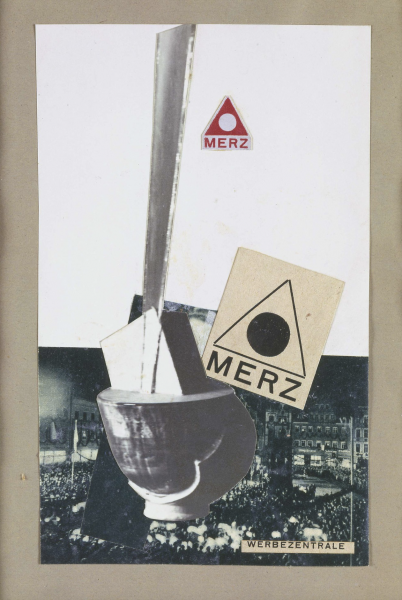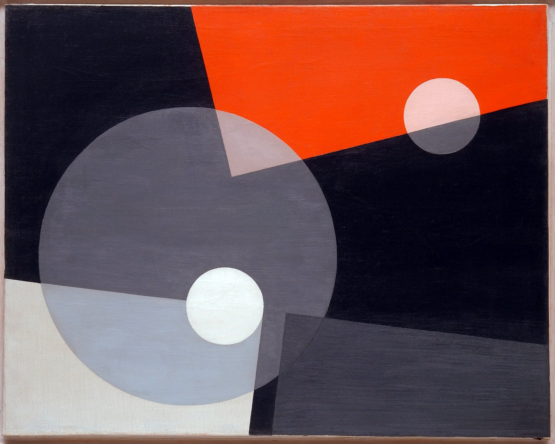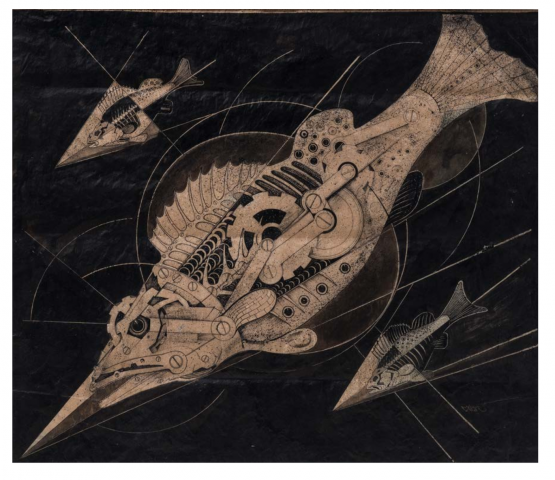The Ernst Schwitters collection, which the Museu do Chiado is exhibiting, within a long period of travelling, has a particular interest in the Portuguese context, as it presents, for the first time, a vast set of works which are fundamental to the development of the vanguards of northern Europe in the twenties and thirties. Alongside them there is also the showing of a significant nucleus of works by Kurt Schwitters, his father.
Indeed, Kurt Schwitters was himself a collector of the works of his colleagues. For certain reasons this collection was sold, and later, since 1960 on, his son has been patiently building up a collection centered upon his father's circles of influence and action. This collection draws out a pathway which is that of the complex and diverse relationships between the vanguards which followed on from Cubism and then developed against and beyond the returning to order which was dominant in the south of Europe. The Museu do Chiado recently had the opportunity to present a Spanish panorama of this period (From Picasso to Dali: the Roots of the Spanish Avant-Garde 1907-1936), along with the Portuguese situation, shown in the Museum 's permanent collection, and in relation to this, the overwhelming presence of the returning to order, in the same period, leaves no one in any doubt.
Kurt Schwitters' biography is mingled within some historical movements which were extremely important in the construction of international modernity, and the full awareness of the fact may have been an important starting point for the organization and meanings of this deep and periodically well-delimited exhibition. Thus it is that the several circuits such as that of the magazine and gallery Der Sturm, the Constructivist International, Russian Constructivism, the Abstraction - Creation, more than chance contacts within a personal sojourn, make up a historical succession, the particular links of which, forged by the relationships of the father Kurt and thematically set out in the collection made by his son Ernst, find, within this set of works, a specific understanding which is particularly relevant towards the paths of modernity. Its complexity and diversity is accepted by means of the dialogue between different plastic attitudes and movements connected to abstraction. The central role which collage carried out, and in the development of which Kurt Schwitters was an exponent, is, in this collection a major theme-maker, if not a deconstructing agent, of the transcendental meanings connoted to many practices in abstract art. At base the relationship between the genuine Dadaism of Kurt Schwitters, associated to the collage and montage - aware of the "newmedia in painting", which Richard Hiilsenbeck spoke of in the First Germanic Dada Manifesto, with Constructivism, which aims at extracting meanings from the techniques which form the artistic object as an autonomous reality, provides a nucleus of issues which are of great importance to the vanguards.
The context of new media and techniques, within which collage and montage become relevant processes, superimposes upon the traditional notion of composition and articulation of schematics inherent to the social contexts of production. This aspect will give a new dimension to the idea of the autonomy of the work of art towards which abstraction tends. This is within a historical context and is its own consciousness. In this sense Kurt Schwitters’ journey through constructivisms may have been that of some complicity and amplifying of common issues.
A set of photographs by Ernst Schwitters is also exhibited. Ernst Schwitters maintained a long friendship with Lazio Moholy-Nagy, and as he was a professional photographer, the two developed really interesting techniques and experiments, which were sometimes pioneering. The gaze of the photographer was a determining factor in the orientation of the relations and issues in this collection.
Another equally important view upon this collection and which has allowed it to be studied and organize within an exhibition is that of Marcus Heinzelmann, its curator, and to whom I wish to express my great praise for the magnificent work carried out and for his total availability to work with us in thinking it for the Portuguese people. To Ulrich Krempel, the Director of the Sprengel Museum Hannover, I send the most cordial recognition of the enthusiasm with wish he welcomed this initiative. I would Iike to expres my thanks to Holger Reenberg, from the Arken Museum fur Moderne Kunst, who firstly introduced me to this fantastic collection in Copenhagen. For María Jesús Ávila and Amelia Godinho, to whom thanks are due for making this exhibition possible in Lisbon, without forgetting the indispensable participation of the entire staff of the Museu do Chiado. Raquel Henriques da Silva, Director of the Portuguese Institute of Museums, was totally enthusiastic, fraternal and understanding throughout the organizing of this project. It is a pleasure to add a note of thanks to the German Foreign Office which the support was important. The sponsorship of TMN was a remarkable exemple of a corporation' s civic and cultural participation and to whom I wish to express my earnest gratefulness. But it is particularly to the memory of the collector Ernst Schwitters, which has been preserved by his wife Lola Schwitters and his son Bengt Schwitters, that I present my deepest thanks.
Pedro Lapa
Museu do Chiado

Kurt Schwitters, Ohne Titel (Speckgummi), 1925
© Ernst und Kurt Schwitters Stiftung
MNAC
entry: General ConditionsFuror Dada
Ernst Schwitters Collection
1999-01-28
1999-04-04
Curatorship: Markus Heinzelmann / Lola Schwitters / Bengt Schwitters
On Exhibition
The Ascension of Mont Ventoux
Manuel Valente Alves
2025-10-26
2026-02-16
Curatorship: Lúcia Saldanha
Photographs, drawings and paintings, by Manuel Valente Alves that develop a poetic dialogue with Petrarch's letter of the same name (Ascensus Montis Ventosi), written in 1336.
.
2025-10-16
2026-02-01
Curatorship: Susana Lourenço Marques, Emília Tavares
This exhibition, in partnership with the Porto Museum, presents the work of three amateur photographers - Margarida Relvas, Mariana Relvas and Maria da Conceição de Lemos Magalhães - developed in Portugal between 1860-1920.
Mily Possoz. A poetics of space
2025-10-01
2026-02-01
Curatorship: Emília Ferreira
The exhibition “Mily Possoz. A Poetics of Space” continues the research into the lesser-studied Portuguese modernists artists present in the collections of the MNAC and Millennium bcp.
Impressões Digitais. MNAC Collection
2024-12-12
2026-12-30
Curatorship: Ana Guimarães, Emília Ferreira, Maria de Aires Silveira e Tiago Beirão Veiga
Consisting of founding works of contemporary Portuguese art historiography, from 1850 to the present day, the MNAC's collection holds several national treasures.
Since 1911
2022-05-26
2026-05-26
An intervention that celebrates 110 years of the MNAC.













